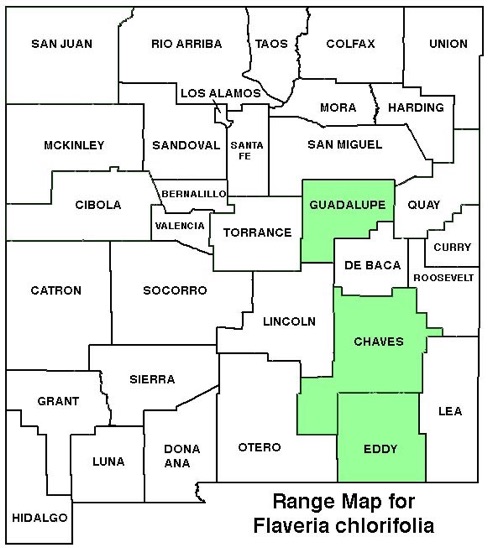WILDFLOWERS OF NEW MEXICO

Favoring moist alkaline habitats, this erect, branching plant reaches 7–28 inches tall with flat-topped flower clusters. The yellow flowers are enclosed in angled, keel-like phyllaries. Note the opposite leaves have united bases that wrap around the stem.
FLOWER: August–September. Flat-topped clusters with 11–13 yellow flower heads at branch tips; 1 tiny leafy bract 1/16-inch long (2 mm) beneath each flower head. Each flower head has 0–1 tiny ray florets, 9–14 disk florets, all enclosed in 5 elliptic, angled, keel-like phyllaries.
LEAVES: Opposite. Blades oblong to lance-shaped, 1 1/4–4 inches long (3–10 cm), bases united and surround the stem (perfoliate); margins weakly to strongly toothed, tips pointed.
HABITAT: Moist alkaline, saline, gypseous, sandy, clay, silty soils; lake and stream sides, spring seeps, disturbed areas; riparian habitat, plains, desert flats.
ELEVATION: 3.500–4,600 feet.
RANGE: NM, TX; Mexico.
SIMILAR SPECIES: Alkali Yellowtops, F. campestris, scattered in southern NM, has also has stem-tip flower clusters, but the leaves do not wrap around the stem. Clustered Yellowtops, F. trinervia, mainly in southern NM, has spherical flower clusters at forks of stem.
NM COUNTIES: Common in se NM in low-elevation, moist, alkaline soils in the Pecos River drainage: Chaves, Eddy, Guadalupe.

CLASPING YELLOWTOPS
FLAVERIA CHLORIFOLIA
Aster Family, Asteraceae
Annual herb



THE CONTENTS OF THIS WEBSITE ARE COPYRIGHTED AND CANNOT BE USED
WITHOUT PERMISSION OF GEORGE OXFORD MILLER
EMAIL ME
• Flower heads form flat-topped clusters at branch tips.
• Flowers have no ray florets and slightly protruding disk florets enclosed by 5 phyllaries (arrow).



The bases of the opposite leaves unite and wrap around the stem.

